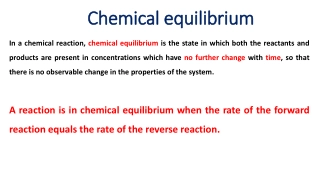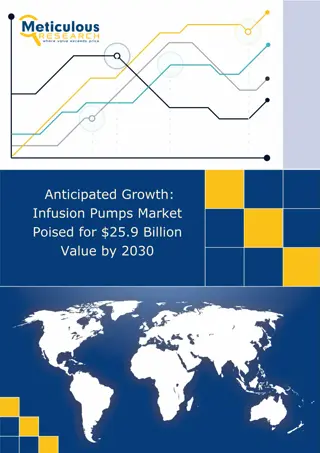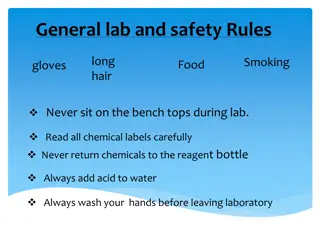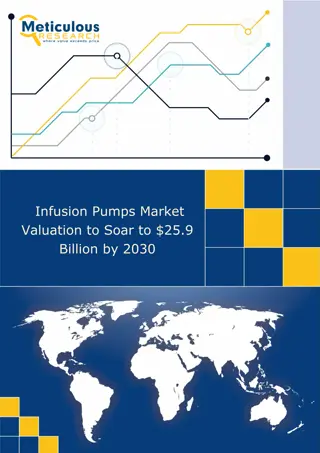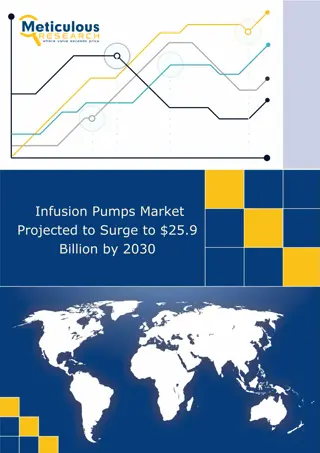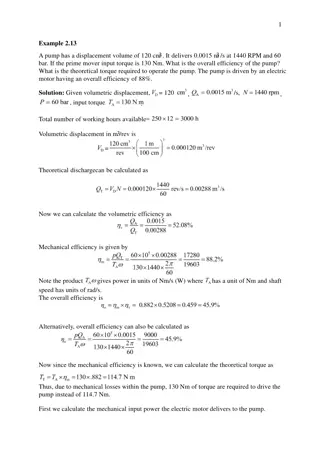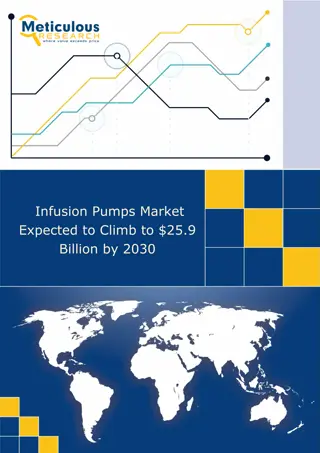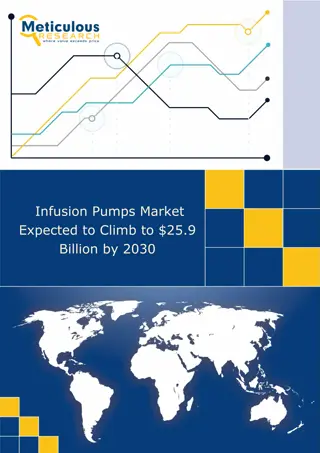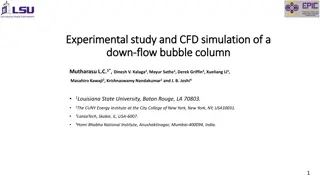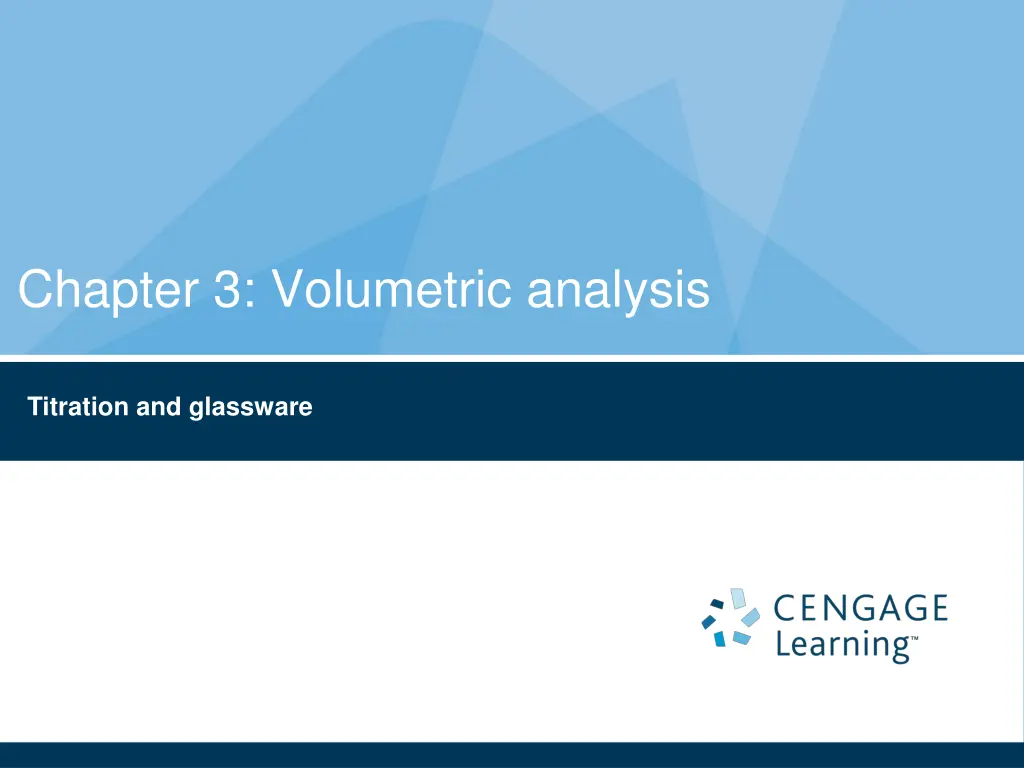
Analyzing Volumetric Techniques in Chemistry
Learn about titration, equivalence points, and specialized glassware used in volumetric analysis in chemistry. Explore the significance of volumetric flasks and burettes in accurate measurements for quantitative analysis.
Download Presentation

Please find below an Image/Link to download the presentation.
The content on the website is provided AS IS for your information and personal use only. It may not be sold, licensed, or shared on other websites without obtaining consent from the author. If you encounter any issues during the download, it is possible that the publisher has removed the file from their server.
You are allowed to download the files provided on this website for personal or commercial use, subject to the condition that they are used lawfully. All files are the property of their respective owners.
The content on the website is provided AS IS for your information and personal use only. It may not be sold, licensed, or shared on other websites without obtaining consent from the author.
E N D
Presentation Transcript
Chapter 3: Volumetric analysis Titration and glassware
What is a titration? Volumetric analysis is a form of quantitative analysis allowing determination of the concentration of an unknown substance. A titration is the main technique for volumetric analysis. A substance with known concentration and volume is titrated against an unknown substance to find the concentration of the unknown substance.
Equivalence and endpoint Titrations make use of the equivalence point of a reaction. Equivalence point when reactants are present in the mole ratio given in the balanced equation. As most solutions are colourless, an acid base indicator can be used to determine the endpoint. This occurs when a small excess of acid or base, just after the equivalence point, causes the indicator to change colour.
Specialised glassware: parallax error A titration involves specialised, calibrated glassware designed to deliver and measure very specific volumes of solution. When reading this glassware it is important to minimise parallax error.
Volumetric flask A flat-bottomed flask with a narrow neck. The line on the neck is the calibration mark and, when filled correctly to this line, the volume of solution will be exact. It should always be rinsed with water to remove any contaminants prior to use.
Volumetric flask When filling the flask, ensure the bottom of the meniscus is on the calibrated line. If the flask is overfilled, it needs to be emptied and the process begun again. You cannot empty the flask partway if you overfill. Use the volumetric flask for making a standard solution from a solid, or for diluting a solution.
Burette A burette is used to deliver a measureable volume of solution, dropwise, into a conical flask containing another solution. The burette is rinsed with distilled water then with the solution it will contain. This prevents dilution of the known concentration solution when added by the excess rinsing water.
Burette When filling the burette, the airlock below the tap should be filled with solution. Let the solution run through the tap prior to taking an initial reading.
Pipette A pipette accurately measures a fixed volume of solution. The calibration line on the pipette indicates when an accurate volume has been reached.
Pipette The pipette is rinsed with distilled water, then with the solution it is to be filled with. As the solution is of a known volume, any remaining water from rinsing would dilute and make an unknown concentration solution. Do not remove the final volume of solution from the pipette; it is part of the calibrated volume.
Chapter 4: Volumetric analysis Indicators and endpoints
Why use an indicator? In a titration, an indicator is used to determine when the equivalence point has been reached and the reactants are present in a given mole ratio. As the equivalence point cannot be seen, a visual point called the endpoint is used. An acid base indicator that changes colour at different pH levels can show the endpoint.
What is an endpoint? At the endpoint, there is a small excess of acid or base. One of the reactants is added from the burette. At the equivalence point, where the reacting mole ratio is equal, there is no visual change because the pH has not changed. Once a small excess, as small as one drop, has been added to the solution, the indicator changes colour. This is the endpoint.
What is an indicator? An acid base indicator is a solution that contains a weak acid and its conjugate base. The acid species is one colour and the conjugate base is a different colour. When one is present more than another, the indicator can change colour.
What is an indicator? When in a base, the indicator donates all hydrogen ions and is present in one form. In an acid, all hydrogen ions are accepted and the other form is present.
Chapter 4: Volumetric analysis Primary solutions
Accuracy Accuracy is the number of significant figures to which a quantity is known. A mass balance can measure to 0.1 g or 0.001 g or even further. The balance that measures to 0.001 g is more accurate. Accuracy is determined by the measuring instrument used.
What is a primary standard? A primary standard is a chemical that can be made up into a solution of accurately known concentration. It must: have a high molar mass so there is less chance of measurement errors be of high purity so contaminants do not cause side reactions Be relatively stable in air, ie not absorb carbon dioxide and water rapidly. dissolve in a solvent, usually water. Common primary standards include anhydrous sodium carbonate and oxalic acid.
Making a primary standard To make a solution of known concentration, the following steps should be performed. Volumetric flask is rinsed with distilled water only. This removes any contaminants. A known, accurate mass of the primary standard solid is measured out on the electronic balance using a watch glass. If the exact mass is not known, an exact concentration cannot be calculated.
Making a primary standard All of the solid must be dissolved in the volumetric flask prior to it being filled. If the volumetric flask is made up to the calibrated mark and THEN the solid dissolved, this may change the volume over the mark. The solution must then be thrown out and the process begun again.
Making a primary standard After the solid is dissolved, fill to the calibrated mark. This gives a known volume. Once the exact mass of solid and exact volume is known, an accurate concentration of the solution can be calculated.
Making a primary standard Before use, the flask should be inverted, with the lid on, so that the solution is homogenous. The solid will sometimes settle out over time, making the solution have a varying concentration. Inverting the flask fixes this issue. Secondary standard can be made up using a primary standard which it has been accurately measured against, eg sodium carbonate primary then used to determine exact molarity of HCl.
Chapter 4: Volumetric analysis Performing a titration
Titrant and analyte A titration is a method used to determine the concentration of one substance through a reaction with a solution of known concentration. The titrant is the solution in the burette. The analyte is the solution to be analysed and has an unknown concentration. The aliquot is the know volume of the unknown concentration.
Setup The acid is usually placed in the burette and added to the base that is in the conical flask underneath. The known concentration is placed in the burette to do the titrations and get a known volume. The unknown concentration is placed in the conical flask with a known volume from the pipette usually 20 or 25ml.
Setup: use of indicator The base (or solution in the conical flask) has 2 3 drops of an appropriate indicator added to it so the endpoint of the reaction can be determined. The endpoint occurs when the equivalence point has been reached. The equivalence point is when the reacting mole ratio from the equation is present. Then a small excess of acid or base is added so the indicator changes colour and indicates the reaction is complete.
Setup: conical flask A volumetric pipette is used to transfer an accurate volume of solution to the conical flask. It is important that this exact volume is known for the calculations at the end of the titration.
Performing the titration The solution in the burette is slowly added to the solution in the conical flask. As the endpoint nears, the burette solution should be added dropwise so that one drop into the conical flask results in a colour change. This is the endpoint. The volume of the burette should be accurately recorded at this stage.
Concordant titres This process should be repeated until three volumes with a very small range (about 0.03 mL) are achieved. Each of these volumes is called a titre and the goal is to get three concordant titres (the same volume or extremely close). The average of these three concordant values should be used in the final calculations.
Calculations The balanced chemical equation gives the reacting mole ratio. Steps to calculating the unknown concentration are: 1 Calculate the number of moles of the known substance (usually using volume and concentration both measured during the titration). 2 Use the reacting mole ratio to calculate the moles of the unknown. 3 Calculate the concentration of the unknown.
Choice of indicator As the equivalence point for acid base reactions varies depending on the strength of the acid and base, the indicator must change within the equivalence point for the reaction being used. Strong acids completely ionise in water, while weak acids only partially ionise. Thus, their reactions with bases will vary and reach completion at a pH that will vary with each reaction.
Choice of indicator Examples of indicators used in strong/weak acid base titrations are shown below.
Choice of indicator To determine the indicator to use in a titration: Identify the salt that is formed as part of the acid base reaction. Determine whether either ion in the salt is a weak acid or weak base. Decide whether the resultant solution will have a neutral, acidic or basic pH. Choose an indicator that changes in this resultant pH range.
Chapter 4: Volumetric analysis Other types of titration
Three types of titrations Other methods of performing titrations that are different to a simple acid base titration are: using a pH curve to determine endpoint when an indicator is not an option using a back titration to determine the concentration of a substance that is not able to be used directly in a titration using redox chemicals that have their own colour so no indicator is necessary.
Titration curves Titration curves are used when an indicator would not give a clear endpoint; for example, when the solution has a colour. Use of a pH meter to plot the pH at various points of the titration allows determination of the equivalence point. A graph is produced that shows the pH against a volume of acid or base added (usually acid). The pH will decrease if acid is added.
Titration curves Once the graph is plotted, the equivalence point can be easily determined by finding the middle of the sharp drop in pH. The volume of acid is read off the graph and used in calculations.
Titration curves When strong/weak acid/base combinations are used, the graph shape changes, but the method used is the same.
Back titrations Sometimes it is not possible to use a chemical directly in a titration: Sample is not soluble in water but will react with other chemicals to form a solution Sample is toxic Sample is gaseous or volatile Sample has very low reactivity and needs heating or pressure for a reaction to occur in a reasonable time
Back titrations: an example Calcium carbonate is not soluble in water so it cannot be used in solution form during a titration. If added to hydrochloric acid, a solution of calcium chloride forms: The amount of HCl added is known, but also in excess. The final solution contains this excess of acid.
Back titrations: an example The final solution, with excess acid, is titrated against a base to determine the amount of acid present. This value is subtracted from the initial amount of acid added to determine the amount of acid that reacted with the calcium carbonate. The reacting mole ratio from the equation then gives the amount, and hence mass of calcium carbonate present.
Redox titrations A redox reaction can be used in a titration. In the following reaction, the permanganate ions, MnO4 , are purple but the manganese ions, Mn2+, are colourless. The colours of the chemicals themselves can be used as the indicator. When the solution turns purple, the endpoint has been reached.
Redox titrations If the chemicals are colourless, but an acid or base is being used, then an acid base indicator can be used to determine the endpoint.

